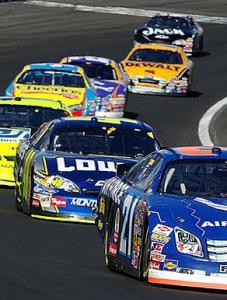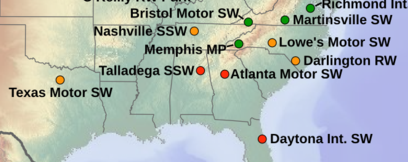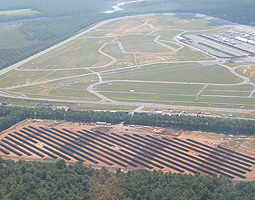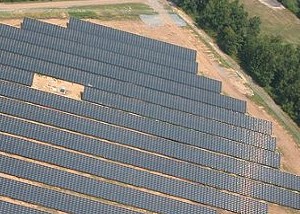
"That headline doesn't feel right," you mutter, scratching your head. After all, you grew up watching those powerful, gas-guzzling monsters thunder through your TV set. But wrap your mind around this cultural koan at your own risk. Predisposed to nervousness? Beware possible facial tics. Or worse, going full fetal.
If you're a Southerner who's disappeared into the NASCAR Triangle between Talladega, Daytona and Bristol Speedways, you're angry, letting the tri-tip burn on the grill. "Whoa, buddy, don't mess with my sport."

NASCAR and the environment are a red state/blue state thing. Trying to finesse the issue, NASCAR had set up a Department of Green Innovation which recycled racing oil, tires, and batteries; planted trees and bought carbon offsets. But when you have a nostalgic, hyper-masculine brand, too much environmentalism could kill you. Mention greening up the sport and diehard fans imagine deadly calm, female drivers coaxing silent Tesla Roadsters around the track. No thunder. Not much of a day. "Hey Thelma, Louise, the canyon's over there--step on it."

But less than a year after the ground breaking ceremony at Pennsylvania's Pocono Raceway, a solar energy system is up, running and tied to the grid.
Constructed in a former 25-acre parking lot adjacent to the 2.5 mile track by enXco, a renewable energy specialist, the $15 million dollar solar farm is made up of 40,000 photovoltaic panels. It generates three megawatts of electricity--enough to power the whole facility and 1,000 homes in the surrounding area--and will offset more than 3,200 tons of CO2 a year. According to Blog Autotopia:
NASCAR is, of course, quite pleased with itself: "Pocono Raceway's solar energy project is the biggest renewable energy stadium project in the world by more than two times. It's going to be an awesome achievement, setting a high bar for all facilities throughout sports," said NASCAR green innovation director Dr. Mike Lynch.
Click here to see a CNN video about the project.
The track's officials aren't idealists. Adopting solar was strictly bottom line. With a $300,000-plus yearly electric bill, Pennsylvania's plans to deregulate the state's power industry had threatened to increase the track's rates 40 percent a year. So Brandon Igdalsky, the raceway's President started looking for prudent alternatives.
Building a wind farm was explored, but the raceway was on the wrong

side of a hill. After a corporate buying group with local hotels and resorts fell through, solar was the only choice.
Igdalsky also noted 40 percent of the facility's power will be sent back over the grid, earning the raceway credits, and helping the project pay for itself in five years.

...the project will last for 40 years, and that's a lot of time for that thing to be sitting there and making power. If we can do our little part not only for what we need, but also for the environment and society as a whole, it's a win-win-win."
Do you think NASCAR is setting a trend for sporting facilities?
Photo: cars on track: US Air Force, Public DomainMap: Nascar race sites: Rosso Robot Creative Commons
Photo: Pocono Raceway ariel: Nascar Press release
Photo: Pocono solar array: Nascar Press Release
Photo: Pit Stop: US Navy, Public Domain


